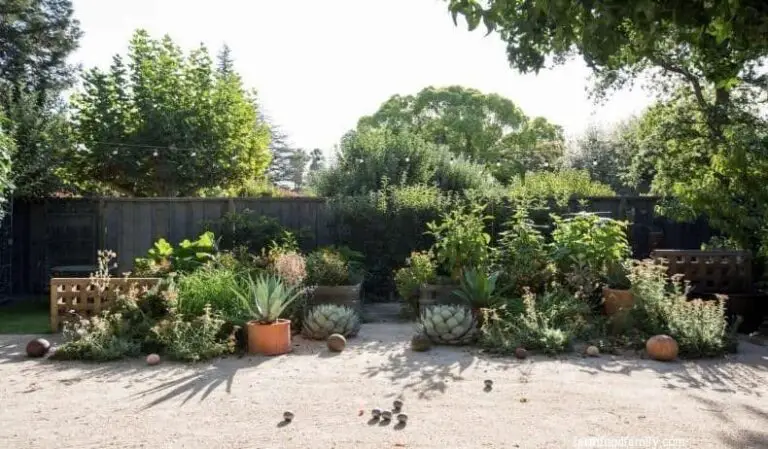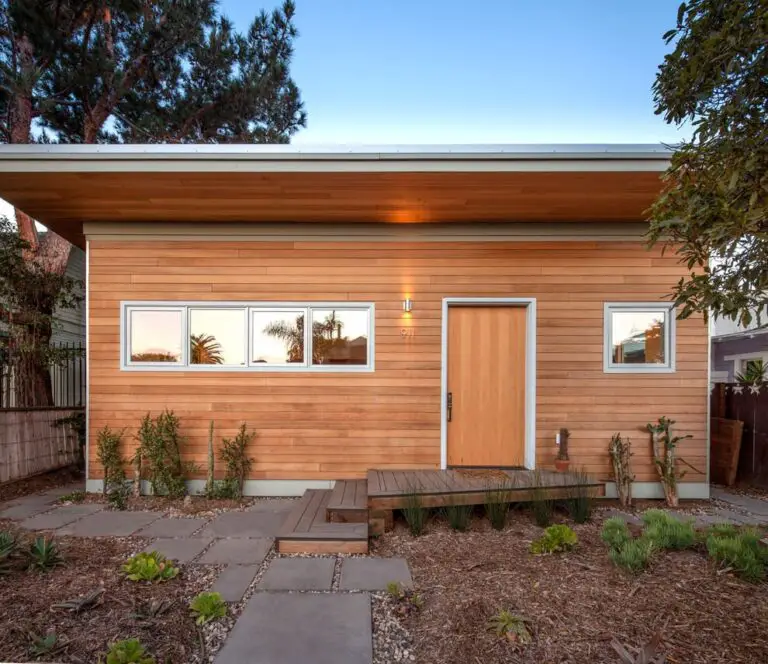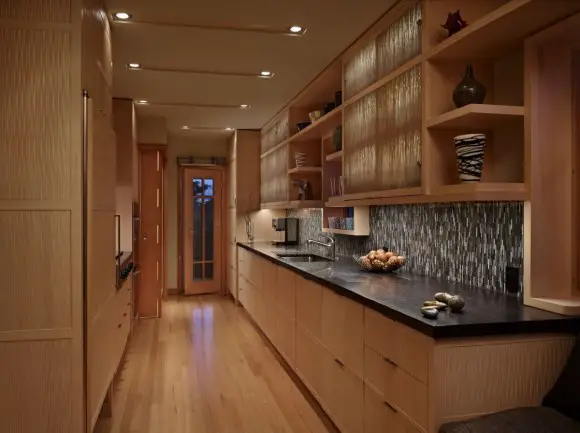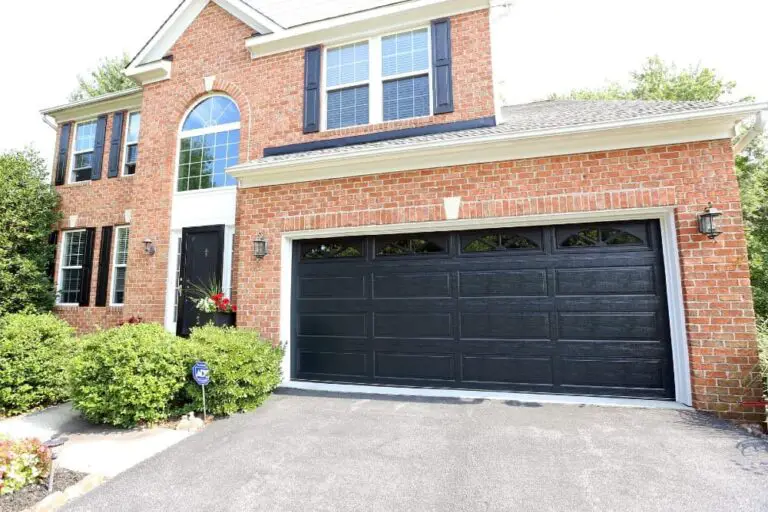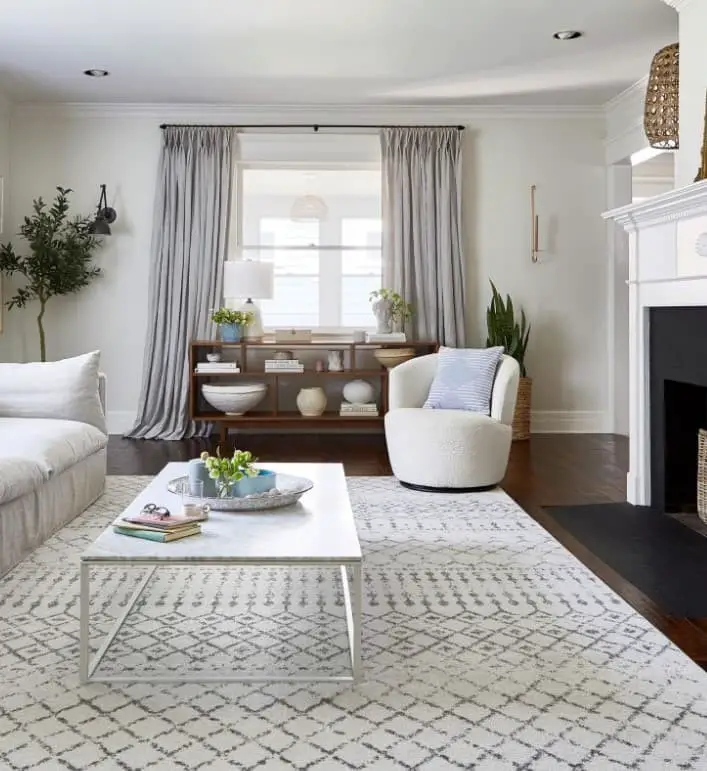30+ Best Basement Storage Ideas And Designs (Finished And Unfinished)
The concept of a basement is often misunderstood, and many people view it as a vast, unorganized space for storing items. However, this doesn’t have to be the case. With some creative ideas and strategies, you can turn your basement into a well-organized haven that makes it easy to find what you need when you need it.
To achieve this, consider implementing some innovative storage solutions.
For instance, heavy frame shelving, clean pantry-style shelves, or even wooden crates and boxes can help keep items off the floor and out of the way. You can also incorporate divider shelves, customized cabinets, built-in shelves and drawers, double-sided storage, stair drawers, and more to create a functional space that suits your needs.
If you’re looking for inspiration, take a look at some basement storage ideas that have been successfully implemented by homeowners.
For example, rows of racks with cubbies, pegboard storage, garage design, or even conventional basement decluttering can provide valuable insight into how to optimize your own space.
When it comes to designing the perfect storage solution for your basement, there are a few key factors to keep in mind. First and foremost, consider the purpose of each area – will you be storing toys, clothes, or perhaps tools?
Second, think about the flow of traffic through the space and how you can create a natural pathway.
Ultimately, the key to creating an organized basement is to start with a clear plan and then execute it with precision. By incorporating some clever storage ideas and being mindful of the overall design, you can turn your basement into a functional haven that makes it easy to find what you need when you need it.
Basement storage shelves
When it comes to organizing a basement, one of the most essential components is shelving. To create an organized and functional space, it’s crucial to start with ergonomically designed shelves that cater to your specific needs. The options are vast, ranging from rustic framed styles to pantry-style shelves and everything in between. For inspiration, take a look at some basement storage shelves that can help you get started.
Heavy frame shelving
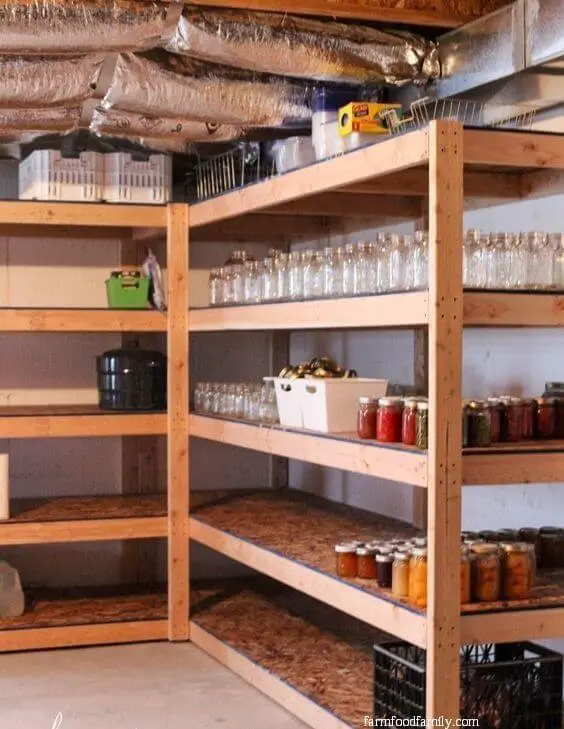
To create a cozy atmosphere in your unfinished basement, consider installing heavy frame shelves to store homemade goods such as jams, dried herbs, and seasonings. The frames can be made of wood or steel, offering a rustic touch that complements the natural surroundings. For added functionality, opt for holders with cork bases, which provide a soft and secure surface for displaying your culinary creations.
This unique storage solution not only keeps your items organized but also adds to the basement’s charm.
Clean pantry-style shelves
To create a welcoming and functional space in your basement, consider using plywood or laminated wood shelving to store lightweight items such as fabric remnants or dry goods. This type of shelving can be particularly effective for storing items that are not frequently accessed, allowing you to keep the area organized and clutter-free. For added convenience, incorporate drawers on the opposite side of the shelving to accommodate more storage needs.
Finally, consider adding recessed lighting to accentuate the space and create a warm ambiance.
Wood, rattan baskets, and boxes
Transform your basement storage space into a stylish ironing room by optimizing its layout. To achieve a clutter-free and organized look, incorporate wooden shelves and replace traditional cubbies or wooden shelves with rattan baskets and wicker boxes for a unique tropical flair.
Divider shelves
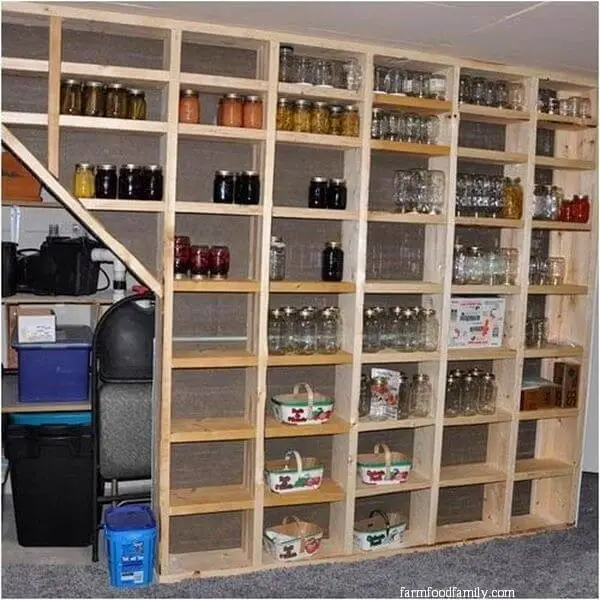
When it comes to maximizing a basement used for storage, workstations, or home offices, one effective strategy is to create partition shelves between walls. This versatile design serves two purposes: providing additional storage space and acting as seamless dividers to define different areas within the room. By incorporating this concept into your layout, you can achieve a functional and organized space that also fosters productivity and comfort.
Finished basement storage ideas
Transforming a basement into a functional living space requires strategic planning and execution. By incorporating various rooms such as home offices, study areas, living spaces, bathrooms, entertainment zones, and bedrooms, the transition from one room to another becomes seamless. To achieve this, homeowners must possess exceptional organizing and decluttering skills. Here are some innovative finished basement ideas that can serve as inspiration for your project.
Customized cabinet
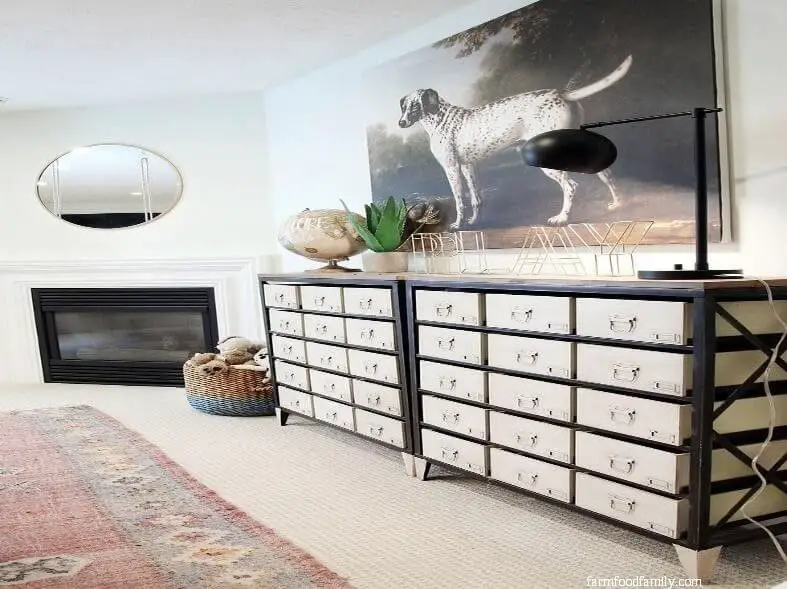
When selecting accent furniture for a finished basement, it’s crucial that the pieces harmonize with the overall aesthetic. To avoid mismatched elements like steel cabinets or wooden shelves, consider investing in customized storage solutions that mirror the design of your basement living space. For instance, a modern style basement living room can be elevated by incorporating bespoke cabinets that complement its sleek and contemporary vibe.
Built-in shelves and drawers
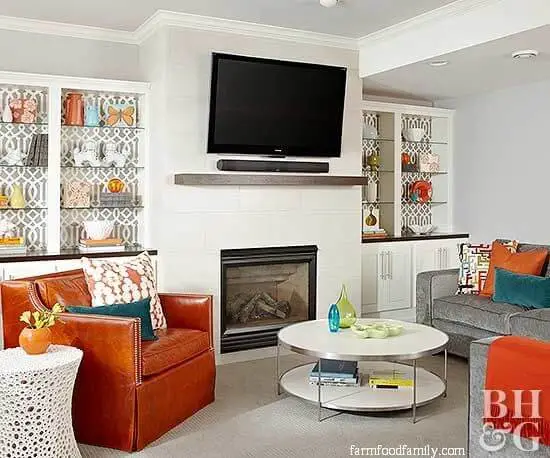
Blending built-in shelves and drawers seamlessly into your basement walls not only contributes to decluttering, but also adds a stunning design element to the space. By letting cabinets below serve as shelving for stored items and showcasing display pieces on open shelves alongside the wall, you can create a harmonious and functional atmosphere that elevates the overall aesthetic of your basement.
Double-sided storage
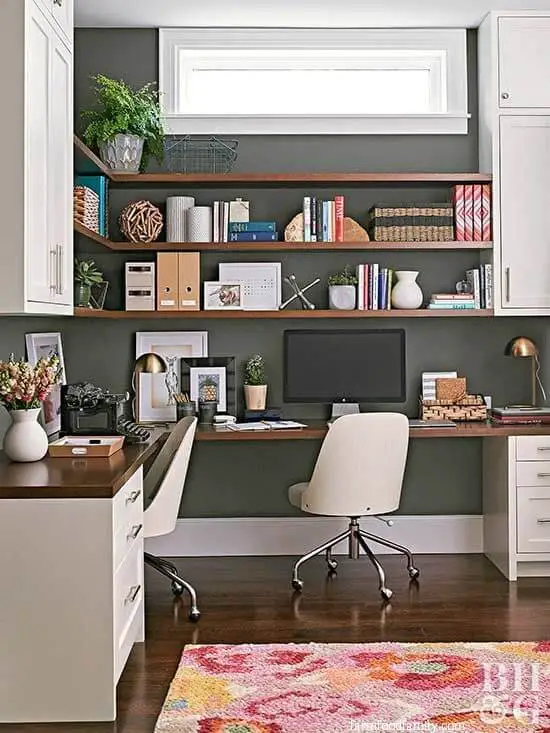
To create a functional and visually appealing basement office, consider implementing double-sided storage solutions that cater to all your needs. Floating shelves and mounted desks can be paired with hanging cabinets for larger items. The double-sided storage approach not only streamlines the space but also lends a cohesive and clean aesthetic. This design element is particularly effective in finished basements, where it can add an attractive touch to the overall ambiance.
Stair drawers
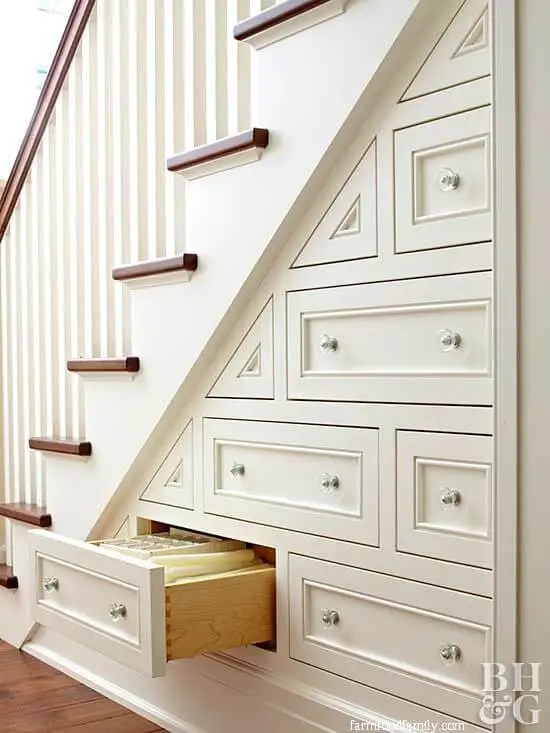
Elevate the style of your finished basement with a clever design element: built-in drawers within your stairs. Not only do they optimize space utilization, but they also add a touch of modern sophistication. The absence of clutter and labeling allows for effortless organization, making this a feature worth considering for a sleek and streamlined look.
Unfinished basement storage ideas
The often overlooked unfinished basement can serve as an ideal space for storing tools, heavy equipment, and household chemicals, effectively transforming it into a makeshift workstation. Given its raw nature, it’s no wonder why many consider this area the most affordable storage option to declutter. To help you get started on tidying up your unfinished basement, here are some practical ideas for keeping this space neat and organized.
Rows of racks with cubbies
In many cases, incorporating properly labeled cubbies for specific items can have a significant impact on the functionality of an unfinished basement. While they may not necessarily overshadow the raw charm of exposed beams on the ceiling, these storage solutions can help to create a more organized and efficient workspace. For instance, consider adding cubby racks or shelves specifically designed for storing woodworking tools, materials, and other supplies.
This type of setup can effectively transform an otherwise bare basement into a well-equipped workshop or storage area.
Pegboard storage
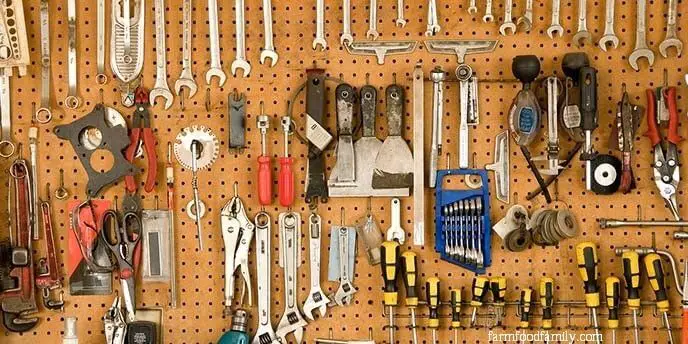
An unfinished basement presents an ideal opportunity to create a dedicated workspace, complete with clever storage solutions. One effective way to optimize this space is by incorporating vertical storage in the form of pegboards. These versatile boards can be used to hang tools and small items, effectively doubling as a partition to define your workstation area. As you design your space, consider incorporating elements that mirror this example.
Garage design
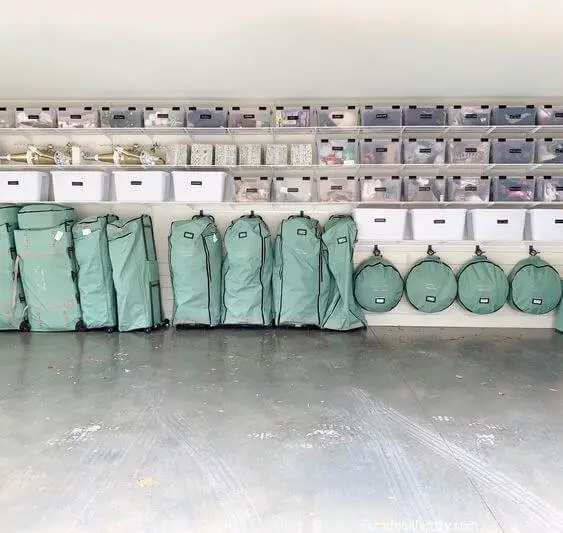
To transform an unfinished basement into functional storage space, consider implementing a garage-style system. This approach utilizes steel or wood racks to create a framework for storing items like plastic bins, balls, and other equipment. By incorporating cubbies and cloth-covered storage bins, you can maintain a neat and organized environment reminiscent of industrial storage, but with a more casual, garage-inspired aesthetic.
Conventional basement decluttering
When it comes to decluttering your unfinished basement, storage solutions can be surprisingly accessible. One of the most budget-friendly options is utilizing space for unfinished basements themselves. By installing racks that categorize specific items, you can create a more organized and clutter-free environment without breaking the bank or investing in elaborate shelving and cabinetry. This simple yet effective approach can help you get the most out of your basement’s storage potential.
Basement storage cabinet ideas
When considering storage solutions for your basement, traditional cabinet options are a good starting point. Floor-to-ceiling, hanging, and wall-mounted cabinets are all common choices. However, when it comes to modernizing your basement’s storage capabilities, the possibilities expand significantly. From sleek and contemporary designs to innovative storage solutions that cater to specific needs, there’s a wide range of modern basement storage cabinetry options available.
Modern cabinetry
When it comes to transforming a basement into an additional living area, it’s possible to achieve without sacrificing its primary function as storage space. One way to do so is by installing cabinets on the basement stairs, which can effectively maximize the available space and turn the area into a unique combination of storage and study room.
Wooden crates
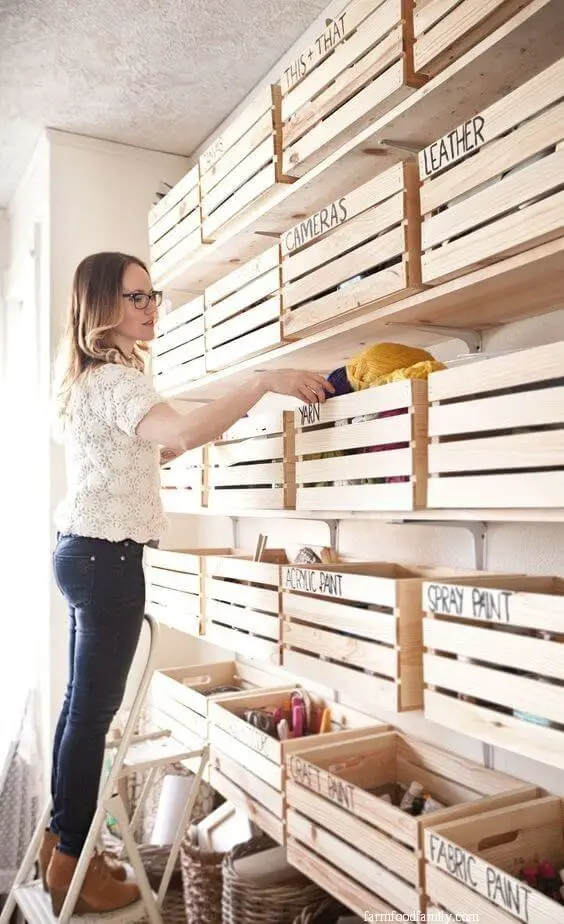
To add a touch of modern flair to your basement storage, consider repurposing wooden crates into unique cabinets. By combining slatted crates with closed ones, you can create separate compartments for dry goods, perishables, and produce. This unconventional approach not only adds visual interest but also provides ample storage space.
For instance, use the open crates to store snacks, spices, or cleaning supplies, while reserving the closed ones for storing sensitive items like fresh groceries or fruits.
Basement cabinets for the laundry room
Transforming your basement into a laundry room is another fantastic option. To achieve a cohesive design, consider incorporating hanging cabinets and built-in storage solutions. Wooden cabinetry can be a great choice if you’ve already installed a dehumidifier in the space. Additionally, you could install a cloth bin storage unit on one side for storing garbage and residual items.
For instance, you may want to look into investing in a top-notch dehumidifier designed specifically for basements, ensuring a comfortable and humidity-controlled environment.
Angled cabinets
When it comes to designing an extended living space, such as a basement lounge or bar, incorporating angled cabinets can add visual interest and functionality. One creative approach is to mirror the angle of the stair railing, creating a sense of cohesion and flow. Additionally, top shelves on these cabinets provide an opportunity to showcase personal items like collectibles or wine collections.
To ensure the cabinets truly stand out, it’s essential to choose colors that complement the room’s aesthetic, rather than clash with it.
Basement storage closet ideas
When envisioning a storage closet in your basement, the possibilities are endless. This space can transform into a practical room for storing personal items, such as clothing and accessories, or serve as a compact storage area for miscellaneous goods. To help spark inspiration, here are some innovative basement storage closet ideas to consider incorporating.
Sliding barn door
To create a functional and visually appealing basement storage space, consider installing a sliding door to keep items organized. Take the design a step further by adding a mirror, corkboard, or drawing board adjacent to the sliding door. This multifunctional approach not only adds a touch of style but also provides a creative outlet for kids, perfect for a study room where files and other important documents can be kept within easy reach.
This idea is an excellent example of how a simple design element can be leveraged to create a space that’s both practical and enjoyable.
Closet style pullout drawers
When it comes to optimizing your basement stairs for storage, think outside the box – or rather, the closet. If a floor-to-ceiling shelving system isn’t feasible due to space constraints, the layers of your stairs can serve as an alternative solution. By utilizing the base of each step, you can stash smaller items, and as you ascend, add more storage compartments, allowing you to make the most of this often-overlooked area.
Secret closet storage
Transform your outdated basement closet into an enigmatic space by installing a wall shelf, perfect for showcasing treasured items or displaying decorative pieces. This clever solution allows you to conceal cluttered items from view, creating a seamless transition between the main basement area and the newly created secret storage room. For larger basements, this addition offers unparalleled functionality, maximizing usable space and promoting a sense of tranquility.
Closet pantry
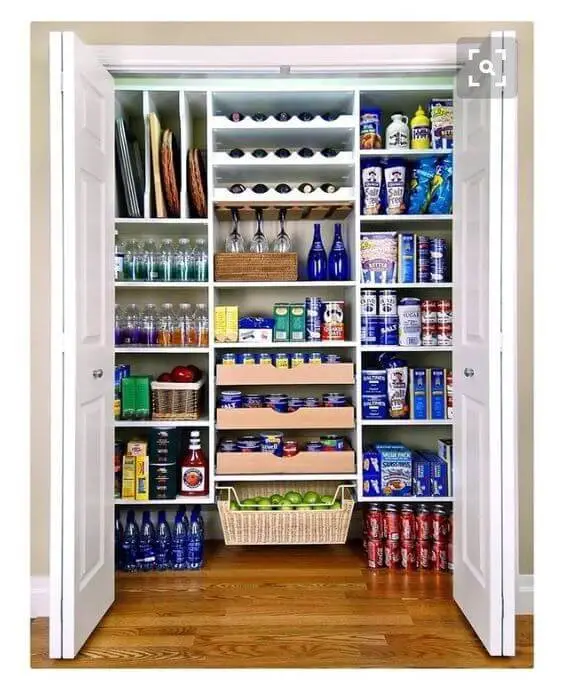
While traditional uses for basement closets often focus on clothing or textile storage, there’s no reason why a small area of your basement can’t be repurposed as a compact pantry. To create such a space, consider installing simple shelving and built-in cabinets below, then cap it off with bifold doors. For inspiration, take a look at this example.
Basement toy storage ideas
As many of us have a stash of old toys stored away in the basement, it’s common to find ourselves torn between keeping sentimental favorites and letting go of items that are no longer usable. Regardless of which camp you fall into, creating a tidy space for your cherished collectibles is a must. In this regard, we’ve gathered some ingenious basement toy storage ideas specifically tailored to homeowners with little ones and adults who never outgrew their playful spirits.
Plastic boxes
In this challenging time of pandemic, decluttering and organizing toys becomes a daunting task. However, with a little creativity, you can find ways to manage your toy collection. One approach is to utilize transparent plastic boxes to store toys that are no longer in use. Simply place them on the lowest shelf or in a designated area for easy storage.
For items intended for donation or gifting, consider designating a specific shelf or section where they can be easily accessed and removed when needed. This way, you won’t need to label each item individually. On the other hand, if you plan to reuse toys in the future, store them on lower shelves for convenient retrieval.
Cloth boxes
For a visually appealing display, consider using color-coordinated cloth boxes with labels to organize your toys. You don’t have to store everything in them; instead, reserve the larger items for display on one side of the shelves while keeping smaller ones tucked away. The versatility of cloth boxes lies in their washability, allowing you to maintain a clean and tidy space without compromising the condition of your collectibles, regardless of how long they’re stored.
Playroom and toy storage basement
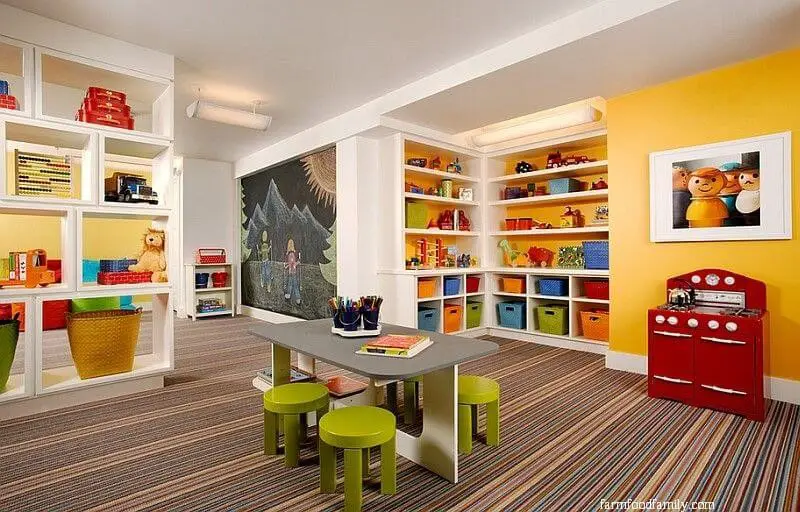
Transforming your basement into a multi-functional playroom and display storage space can be a game-changer for families. By repurposing this often-underutilized area, you’re not only creating a safe and inviting environment where children can freely explore and play, but also carving out a quiet corner for yourself to relax or pursue hobbies.
Imagine being able to supervise your little ones while they engage in imaginative play, all while having easy access to display your favorite childhood toys or treasured collectibles. This thoughtful redesign offers the perfect blend of functionality and whimsy, making it an ideal space for families to bond and make lasting memories.
Box cabinets
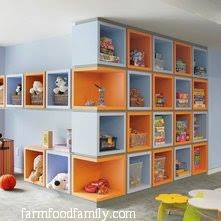
Transform your basement’s toy storage game by installing a spacious box cabinet system. This unique setup features smaller box cabinets nestled within the larger ones, allowing for creative display rather than mere storage. To add a pop of color and whimsy, consider painting each compartment in bright, kid-friendly hues.
RV basement storage ideas
When it comes to trailer homes, many people assume they’re limited in terms of living space and amenities. However, the reality is that modern trailers can be equipped with all the comforts of a traditional home, including cleverly designed storage solutions. One such innovation is the inclusion of basement storage, which can be a game-changer for frequent campers or road trippers.
This extra storage space allows you to stash away gear, supplies, and even valuables, keeping them safe and out of sight while you’re on the move. If you’re considering investing in an RV with basement storage, here are some examples of how you can utilize this feature to enhance your adventures.
Cargo storage
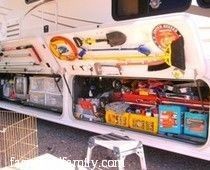
When it comes to storing gear and equipment for RVs and buses, conventional storage solutions are often reliable choices. For smaller items, consider utilizing basement compartments for stashing away essentials like fishing lines and camping equipment. Visualizing the setup can help – think of installing pegboards to maximize vertical space.
Pull-out basement closet
A versatile basement closet solution is to design a pull-out space that serves two purposes: storing clothing and drying washed garments under natural sunlight. This setup allows for efficient use of storage space, as smaller items can be stacked in bins while hangers are secured with steel rods. The flexibility of this system enables easy access to fresh clothes when needed – simply slide out the closet unit and retrieve your desired attire.
Under the bed storage
For added flexibility, consider implementing under-bed storage in your trailer’s compartment. This is particularly useful if the space is already maximized. By installing custom shelves or drawers beneath the bed, you can create a convenient repository for storing clothes, accessories, and other small items. This eliminates the need to frequently access external storage bins, allowing you to maintain a clutter-free environment.
Sliding dirty kitchen set
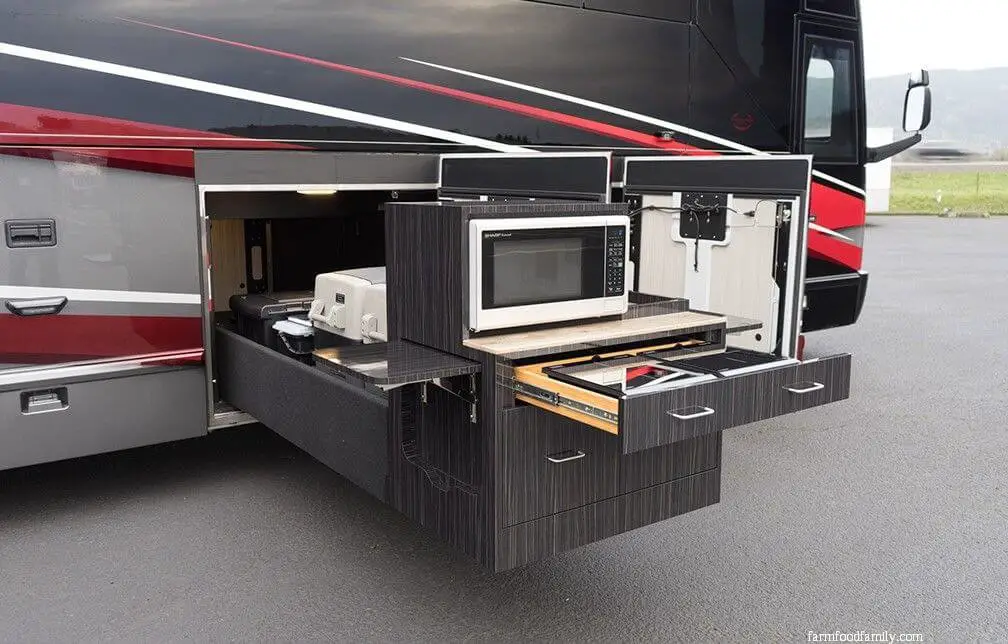
When it comes to campouts or living in an RV without windows, the smell of smoke and food can be overwhelming. To combat this issue, consider installing a custom compartment that doubles as a sliding dirty kitchen set. This added feature allows for convenient reheating of leftovers using your microwave, while also providing ample storage space for kitchen utensils within separate partitions. This thoughtful addition can greatly enhance your overall living experience.
IKEA Basement storage ideas
When it comes to furnishing a home, IKEA remains a go-to choice for many due to its reputation for producing high-quality, modern designs that seamlessly blend with a wide range of decorating styles. But the Swedish retailer’s expertise doesn’t stop at just providing stylish pieces – they also offer a variety of storage solutions perfect for maximizing the space in your basement.
Streamline basement closet
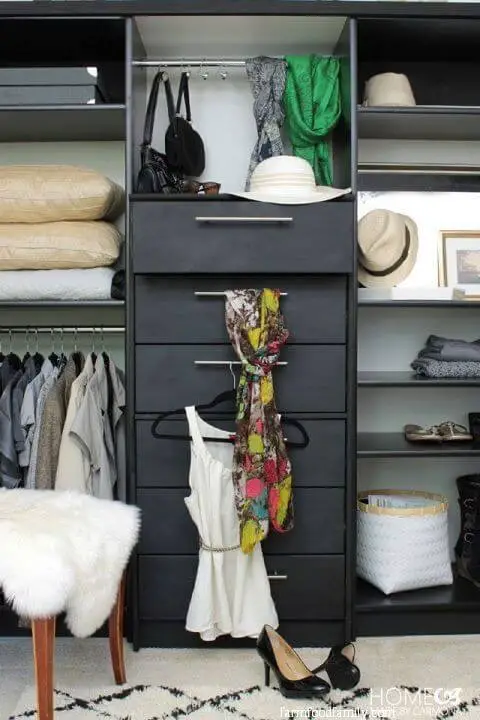
By repurposing the IKEA Rast dresser, you can transform your basement closet into a sleek and organized space. Simply attach two small shelves to each side of the dresser to create a compact yet functional area. For a more comprehensive closet experience, consider adding hanger rods for hanging garments, shoe drawers on one side, and storage space for bags on the top shelf. Additionally, dedicate a shelf to storing blankets and pillows, effectively maximizing your basement’s storage capacity.
IKEA toy storage unit
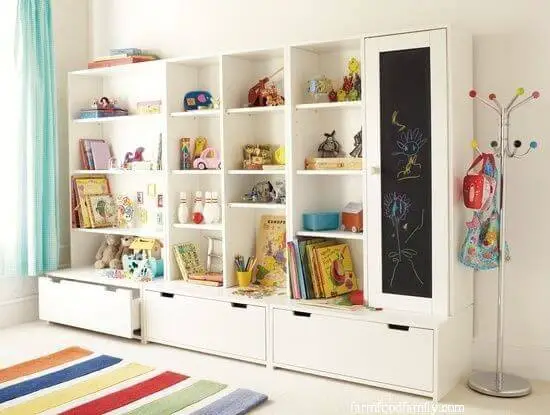
For an even more comprehensive solution, consider purchasing a full toy storage unit from IKEA that can be mounted in-wall. This versatile design boasts three panels of shelves, perfect for showcasing toys and decorative items. Each panel is equipped with a single drawer, providing ample storage space for toys, art supplies, or other treasures. Additionally, one of the panels features a built-in drawing board accent, making it an ideal choice for child-friendly basement storage solutions.
IKEA cubbies
Incorporating functional yet visually appealing storage solutions into your basement home office is essential to maximize space efficiency. One effective approach is to utilize stylish and modern prefab cabinets from IKEA, which offer more than just aesthetic value. By installing additional cubbies, you can effectively organize your documents, prioritize important files, and categorize papers based on urgency, ensuring a clutter-free workspace.
Floor to ceiling IKEA cabinet
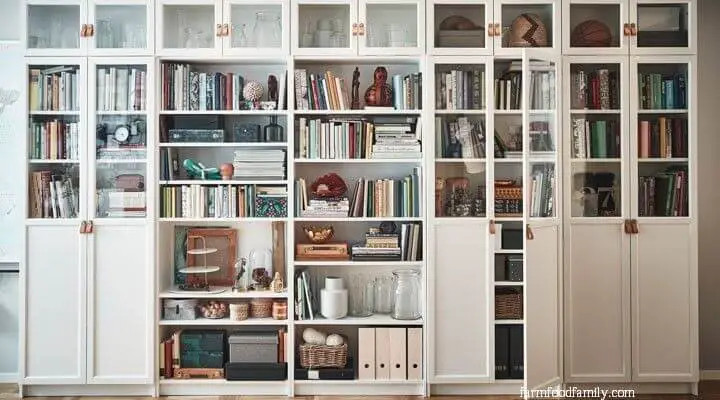
When it comes to designing a Victorian or vintage-inspired basement, consider incorporating an all-in-one floor-to-ceiling IKEA cabinet that offers ample storage opportunities. This versatile piece features multiple compartments, including cabinets and shelves, as well as a glass-topped shelf perfect for displaying fine wines, collectibles, or other treasured items. The sleek design provides a cohesive look while catering to your needs for organization and display.
Take a moment to appreciate the comprehensive view of this all-encompassing IKEA cabinet.
FAQs
As you’ve gained inspiration from envisioning the potential of your basement storage, it’s essential to arm yourself with crucial insights to embark on a successful organizing venture. To set the stage for your project, consider these frequently asked questions regarding basement storage, which should be top-of-mind.
What should not be stored in a basement?
When it comes to storing items in your basement, it’s crucial to consider the durability of the materials used for shelving and cabinetry. To ensure your belongings remain safe and undamaged, here are some categories of items that you should avoid storing in your basement: Firstly, sensitive documents and important files should be kept away from potential moisture damage or flooding risks.
Similarly, delicate fabrics like silk or wool should not be exposed to humid conditions that can cause them to wrinkle, shrink, or even rot. In terms of food storage, it’s best to avoid keeping perishable items in your basement as they may spoil due to temperature fluctuations and humidity. This includes fresh produce, baked goods, and dairy products. When it comes to lighting, you should never store candles or any flammable materials in your basement as they pose a significant fire hazard.
Additionally, storing vitamins, medicine, or electronics in your basement is not recommended as they require controlled environments for optimal storage. A slight temperature change or humidity spike can damage these items irreparably.
What is the fastest way to declutter a basement?
To accelerate your decluttering process, consider this strategy: Divide the basement into manageable sections and commit to a 20-minute decluttering sprint for each area. Start by prioritizing the most pressing spaces that require attention. Designate a sorting station where you can categorize items as you go. Don’t overlook vertical space – maximize it by labeling everything.
Place frequently used items in easily accessible locations, while relegating less-used items to boxes or the back of shelves. Be ruthless with ‘just in case’ items and eliminate them immediately.
Is it better to store clothes in the attic or basement?
While both basements and attics have their pros and cons when it comes to storing clothing, the attic surprisingly outshines its underground counterpart. Despite potential dampness during winter months, the attic maintains a consistent level of humidity throughout the year. In contrast, basements are more susceptible to flooding and moisture issues without proper dehumidification measures in place.
This increased risk of damage makes the attic a more suitable choice for storing clothes compared to basements.
How do I organize my basement storage?
When it comes to organizing your basement storage, there are several key strategies you can employ to ensure maximum efficiency and longevity. To begin with, consider the 80/20 rule: get rid of any items that are no longer usable or salvageable, as well as anything that’s been borrowed from friends. This will help declutter your space and prevent the buildup of unnecessary clutter.
Next, take a closer look at the items you have stored away – those that are prone to damage in moist environments should be prioritized and sorted accordingly. To keep things organized, label each storage box and shelf layer with its contents, making it easy to locate specific items when needed. Divide your space into sections based on seasonality, setting aside designated areas for winter, spring, summer, and fall-specific items.
When it comes to storage containers, opt for durable, airtight options that will withstand the test of time. Finally, take stock of what you have stored away by creating an inventory – this will help you keep track of your belongings and ensure nothing gets lost or forgotten in the process.
How do you organize an unfinished basement?
When it comes to organizing an unfinished or finished basement, the approach remains surprisingly similar. The ultimate objective is to rid the space of clutter and chaos. Drawing inspiration from our previous guide on organizing basement storage, you can apply the same principles to your project, regardless of whether the area is currently exposed or finished.
How to protect boxes in a basement storage
When it comes to storing items in your basement, there are only a few key steps to take to ensure your belongings remain safe and secure. The first step is to choose the right storage containers. Ditch the cardboard boxes and opt for airtight or temperature-resistant ones instead. Not only will this save you from having to worry about protecting them, but it will also help keep moisture and pests at bay. Next, consider elevating your storage units to prevent water damage.
Shelves and cabinets are great solutions for keeping items off the floor and away from potential floodwaters. Finally, make sure your basement is properly insulated to avoid any unexpected flooding issues. By following these simple steps, you can rest assured that your belongings will be protected and your basement will remain a safe and dry storage space.
How to build a cold storage room in the basement
To construct a functional cold storage room within your basement, you may need to enlist the services of an experienced contractor. A more straightforward approach involves partitioning the space by thickening one section’s walls and insulating another. This clever design allows the insulated area to circulate some of the cool air from other rooms into the cold storage space while keeping the temperature-stable environment within the walled-off area intact.
Conclusion
In a surprising twist, transforming your basement into a harmonious blend of functionality and livability is not only possible but also highly recommended. By incorporating clever storage solutions, you can seamlessly integrate this often-neglected space into the heart of your home’s daily rhythm. With its newly found purpose, the basement becomes an indispensable haven for your family to thrive and create memories around.
Related Posts
To embark on a creative career path as a furniture designer, individuals should consider the following steps. First, they should develop their artistic skills through formal education or self-study. This includes understanding design principles, learning about different materials, and exploring various techniques to create unique pieces. Additionally, having experience in the industry can be beneficial, whether it’s working for an established company or freelancing on personal projects.
Furthermore, staying up-to-date with current trends and consumer preferences is crucial for success. For instance, incorporating elements of sustainability and accessibility into designs can make them more appealing to a wider audience. By combining artistic vision with practical knowledge, individuals can create innovative furniture pieces that meet the needs of diverse consumers.

